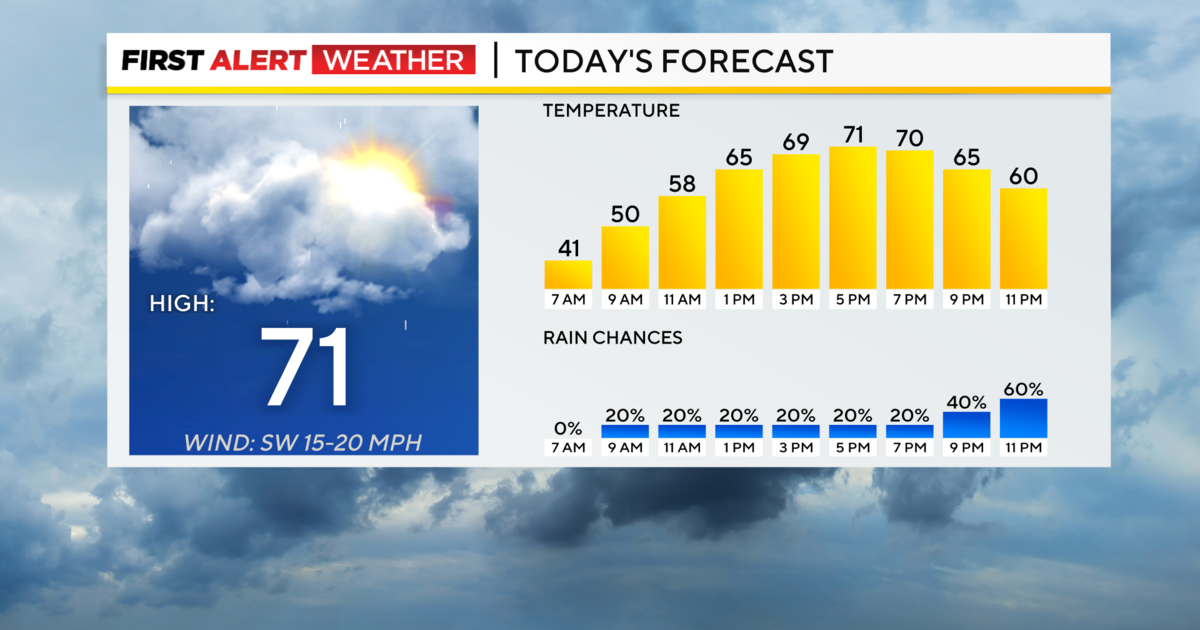Researchers Working On Portable, Life-Saving Food Allergen Detector
Follow KDKA-TV: Facebook | Twitter
PITTSBURGH (KDKA) - If you have food allergies you know going out to eat, or even going over to a friend's house for dinner can be a little scary. But, what if there was a way to know if the food you're eating might cause an allergic reaction?
Researchers at Massachusetts General Hospital are working on a potentially life-saving device - a food allergen detector that you could carry with you wherever you go.
The project first started as a way to detect cancer cells, but the team saw another opportunity.
"We asked ourselves the question, what else could this technology be used for? And allergies was right up there, in front of everything else, because so many people in the U.S. have allergies," says Dr. Ralph Weissleder, of Massachusetts General Hospital.
The device is fairly small - about the same size as a keychain. People with food allergies could simply carry it in their purse or pocket, and test their food to know if it's safe.
"We have been inundated with emails from patients who say, well, this would change my lifestyle," Dr. Weissleder said. "With something like this, I could go and travel, or I could go back out and eat, or I could test the food my kid eats at the school."
The work to get to this point has taken two years. KDKA-TV's Dr. Maria Simbra recently went to Boston, and was the first TV reporter in the country to get a first-hand look.
To use the prototype, you need three tubes. One tube that contains the food, another tube where any allergen in the food would bind to tiny beads, and a third tube that contains chemicals that when mixed together and placed on the sensor will produce an electrical signal.
Currently, it takes two to five minutes to dissolve the food for testing. Then, you have to mix the food solution with beads. Those beads then bind with gluten, peanut, hazelnut, milk, or egg white. The beads, plus another chemical, create a reaction.
"This device, in essence, detects the electrical current or electrical signal coming from the chemical reaction," says Dr. Hakho Lee, of Massachusetts General Hospital.
For a demonstration in the real world, Dr. Simbra took the device for a test run. She went to the grocery store and picked up a few items in the prepared foods section - things that people might just grab and go and not know whether or not there might be an allergen in them.
The device can test for only one allergen at a time. The tubes she had to use could check only for gluten.
So first, she tested it on pasta, which was a little slippery.
Our tests of all three foods showed more than 20 parts per million of gluten, the threshold to make the skull and crossbones appear on the device. If you're sensitive to gluten, that's the signal to avoid this food.
Admittedly, in its current form, it's a little clunky.
"There are many challenges, actually," says Dr. Lee. "How to make the device smaller. But our biggest challenge is to simplify the extraction process."
While that might be their biggest challenge, the researchers really want to streamline the entire process.
"That's our vision," Dr. Lee said. "You just have a little piece of food, put it in the device, and then five minutes later, information can be displayed on your device or even on your smartphone."
Right now, only three such devices exist, each made from $40 worth of commonly available parts. The team has several interested manufacturers, and is optimistic the device could be on the market in a couple of years. But, a lot has to happen first.
For example, making a consumer version scaled up in quantity.
"Basically, farm this out to the patient population here, and improve it on their feedback," said Dr. Weissleder.
The team will also explore other options.
"Selling it to the food industries, selling it to restaurants, selling it to institutions," said Dr. Weissleder.
Some allergists worry about sampling error.
"When you're testing a food product, you could have a food allergen, like peanut, on one side of the food, but not on the other," Dr. James DeAngelo, of Allergy and Clinical Immunology said.
But, he agrees this sort of device could be life-changing for his patients with food allergies.



